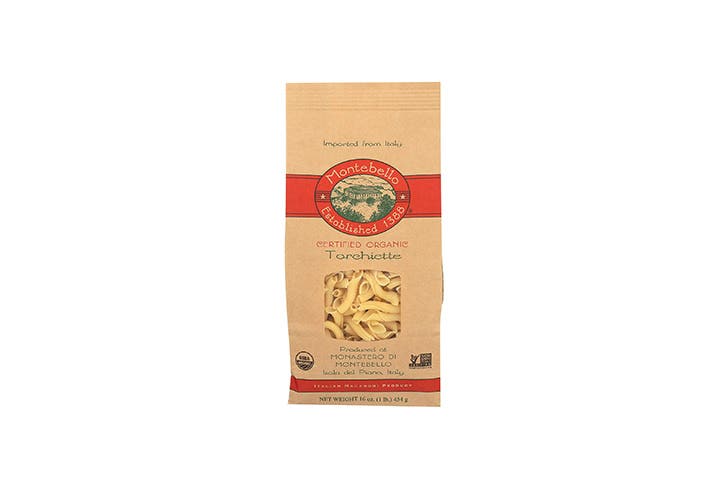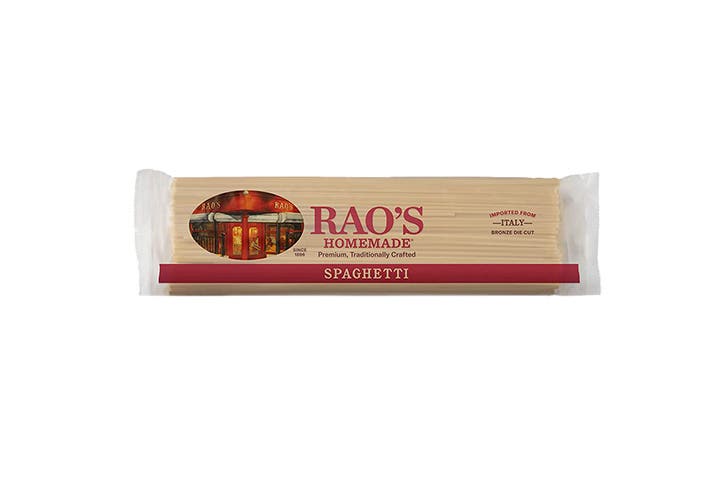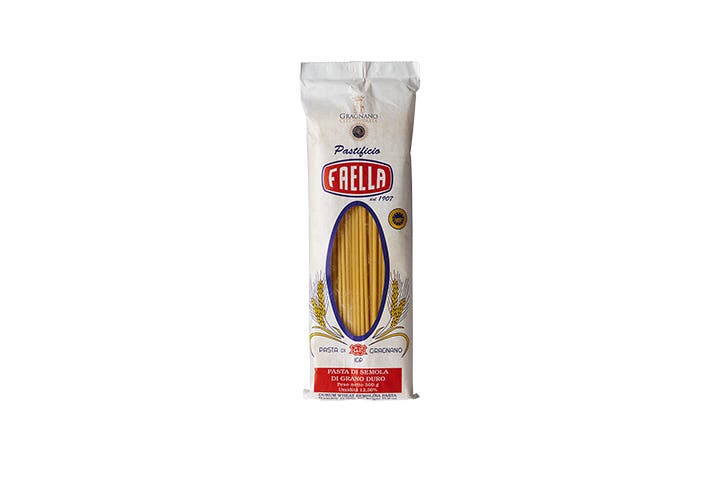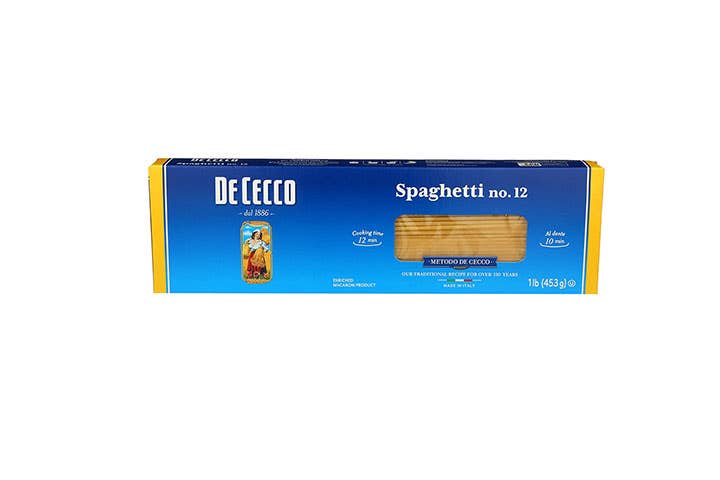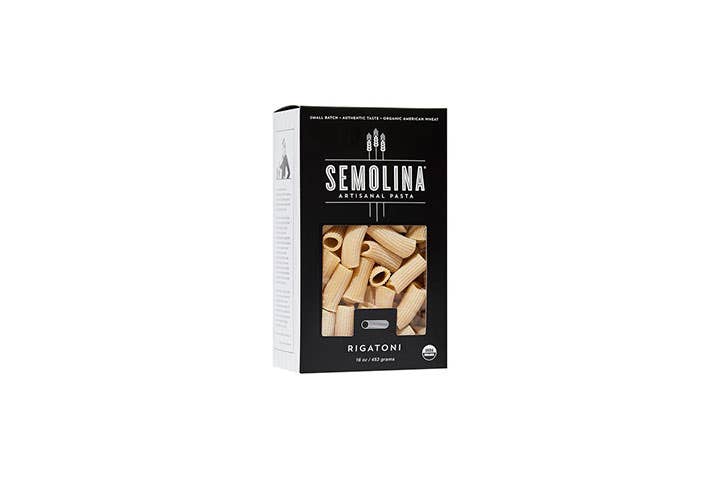Bronze Dies and Slow Dried: What Makes the Best Pasta Brands?
We tested 50 bags and boxes of noodles to find our favorites.
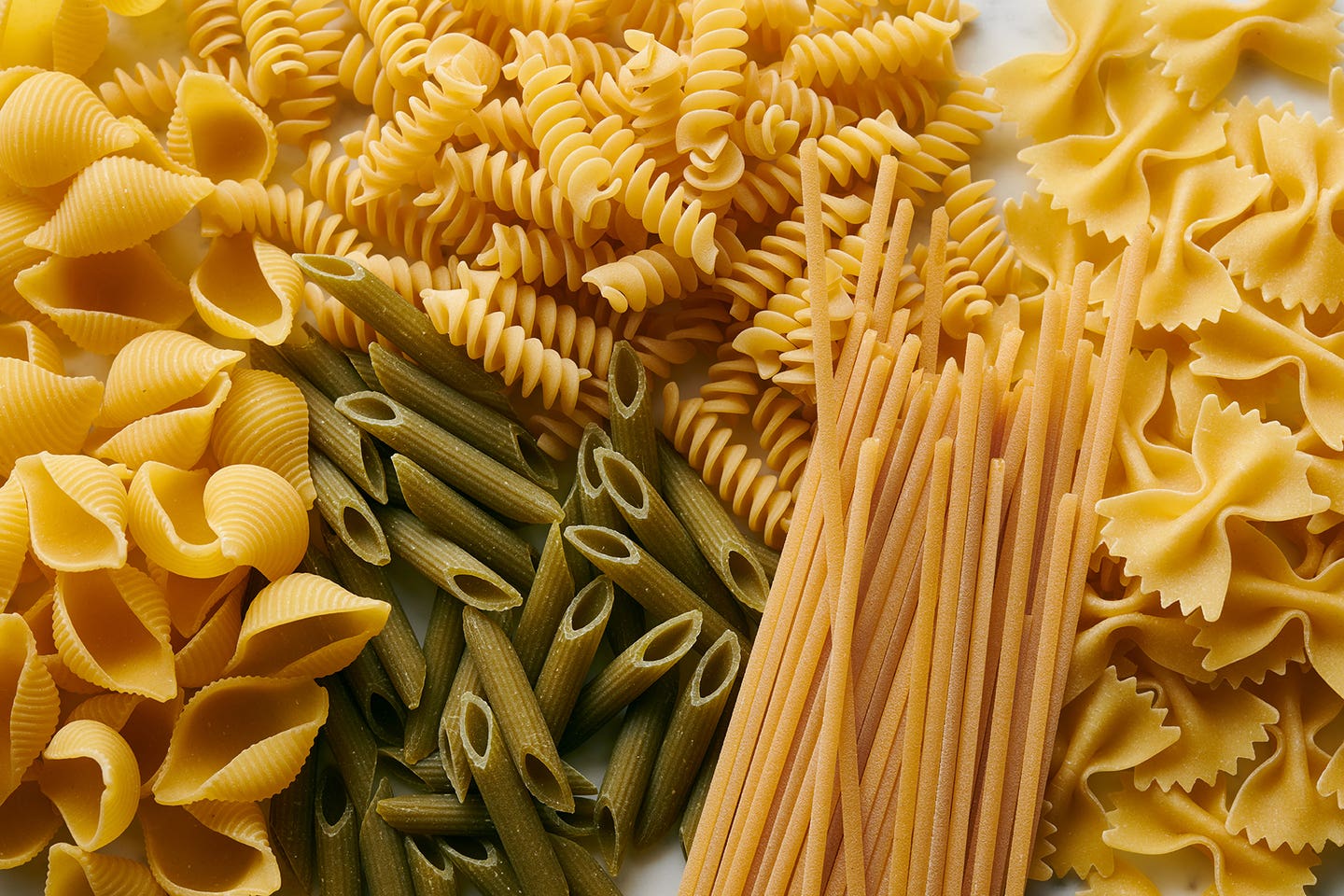
Dried pasta can be squirreled away almost infinitely in a cupboard and popped out anytime you need a quick, easy dinner. Top it with jarred sauce to affordably feed a crowd, or toss in carefully tempered cheese to demonstrate your culinary clout with cacio e pepe. Although most use the same simple ingredients and relatively low price point, the best dried pasta brands make a significant difference in the finished dish.
"[Dried pasta] is so versatile," says Jim Dixon, the owner of Wellspent Market. "I like the texture of it. It's more durable, it holds up, and it lends itself to a lot of different applications." When it comes to what makes a good dried pasta, he says, "I think the most important thing is that it tastes good just on its own."
"I look for 100% semolina," says Megan Barone, the founder of Seattle's Mixtape Pasta, referring to the specific grind of traditional durum wheat used in Italy. Semolina flour contributes to dried pasta’s prized rough texture, which helps the cooked pasta hold onto sauce and have a pleasant chew. This texture also comes from extruding the dough through bronze dies, which gives pasta more of that coveted roughness, while cheaper industrial brands substitute Teflon, creating smooth surfaces on the pasta.
In the past, we've looked solely for the best spaghetti, contemplated if $11 a pound was too much to pay for pasta, and thought about the best boxed pastas. This time, we tasted through more than 50 pastas in search of the most delightful shapes, the most magnetic to sauce, and, in general, the best pasta brands.
- Best Overall: Montebello Torchiette
- Best Brand: Rao's Homemade
- Best Long Noodle: Pastificio Faella Bucatini
- Best Spaghetti: De Cecco Spaghetti no. 12
- Best Short Noodle: Semolina Rigatoni
Our Top Picks
Best Overall: Montebello Torchiette
Best Overall
Price: $4.25/lb | Country of Origin: Italy | Cooking Time: 7-9 minutes
Why we chose it: The subtle ridges and rolled shape make for the perfect texture for sauce while the sweet flavor stands up on its own.
These "little torches" bowled us over with their gentle, sweet, pure semolina flavor and tiny ridges. The great rolled texture of this shape from Campania has all the sauce-catching benefits of a pinched pasta like rigatoni or fusilli without the uneven cooking downsides. Pesto nestled perfectly in its nooks and crannies. The pasta also didn’t have any interfering flavors and cooked up exactly as directed in a quick seven minutes.
What We Like
- Subtle ridging
- Sauce-catching shape
What We Don't Like
- Difficult to open package
Best Brand: Rao's Homemade
Best Brand
Price: $2.69 - $9.00/lb | Country of Origin: Italy | Cooking Time: Varies
Why we chose it: While some brands shone with a single shape or style, only Rao's maintained consistent texture and flavor across a variety of pastas.
All of Rao's Homemade pasta shapes—short, long, ridged, and smooth—shared excellent etching from bronze-die extrusion, a deep yellow color from an all-semolina dough, and a reliable cooking time. Even the fusilli cooked up evenly, with nice wide curves that sucked up sauce. The linguine and spaghetti each rivaled the top versions we tasted, and uniquely among the brands we tasted, Rao's did not have a single miss among their products. The only downside is that the pricing can vary widely, from matching the mid-range supermarket brand prices when on sale to equalling premium brands.
What We Like
- Dependable textures
- Nice yellow color
What We Don't Like
- Can be expensive
Best Long Noodle: Pastificio Faella Bucatini
Best Long Noodle
Price: $8/1.1lb | Country of Origin: Italy | Cooking Time: 8 minutes
Why we chose it: These long tubes cooked up evenly, with a fresh taste and nice wheaty flavor.
Bucatini is the current darling of the pasta world, and this excellent version shows off why: The hollow noodles cook extremely evenly and give tons of surface area for sauce and flavor to blanket. Faella's dried bucatini has an almost sandpaper-rough texture from their bronze-die extrusion, meaning the sauce really clung to all parts, even though that texture becomes almost imperceptible after cooking.
What We Like
- Fresh flavor
- Even texture
What We Don't Like
- Pricey
Best Spaghetti: De Cecco Spaghetti no. 12
Best Spaghetti
Price: $2.79/lb | Country of Origin: Italy | Cooking Time: 10-12 minutes
Why we chose it: The shape and flavor of this spaghetti embodies the platonic ideal of the most beloved Italian American noodle shape.
De Cecco's spaghetti no. 12 is the pasta that Italian American families are raised on. It walks the line between chewiness and give perfectly, embodying premium pasta traits—all semolina, bronze-die, slow-dried—with a distinctly non-premium price tag. While it won't battle the super-budget brands on cost, it blows away the other pastas in its price category, many of which had a bitter or off taste to them. This one doesn't burst with semolina flavor, but it does have a pleasant neutrality that is ideal for classic spaghetti dishes where the sauce takes over, anyway.
What We Like
- Simplicity
- Affordability
What We Don't Like
- Added ingredients
Best Short Noodle: Semolina Rigatoni
Best Short Noodle
Price: $7.95/lb | Country of Origin: U.S. | Cooking Time: 5-8 minutes
Why we chose it: Gentle ridges with big flavor made these little tubes stand out.
The only American-made brand to find a home on our list, this Los Angeles company does a lot of things right. The pasta has a nice, smooth bite, good sweet wheat flavor, and a pleasantly rough extruded texture. The rigatoni best exemplified this, with the small ridges on big tubes making for a really pleasant feel in the mouth. It grabbed onto sauce wonderfully and is a top contender for any chunky red sauce dishes. However, we noticed that all the Semolina brand pastas used the same general cooking time recommendation, while the pastas themselves ranged widely—both within and outside of that range. For a premium pasta, it was disappointing that they didn't seem to bother tailoring cook time recommendations to individual shapes.
What We Like
- Big flavor
- Saucability
What We Don't Like
- Little guidance on cooking time
How We Chose These Products
Our market editor researched the category with eyes on quality ingredients, price point, and a variety of shapes. We tasted through more than 50 pastas with Megan Barone, the pasta expert and aficionado behind Seattle's Mixtape Pasta, cooking each as directed on the package in salted boiling water. We evaluated them for flavor and texture, as well as noting other factors like packaging, pricing, and cook time. The top ten pastas from the initial tasting then each got cooked and tossed in a hot pan with the appropriate sauce for its shape—pesto, creamy mushroom, or tomato—to check its sauce-holding capability.
Features to Keep in Mind When Shopping for Dried Pasta
Shape/Size
Dried pasta comes in a near-infinite array of sizes and shapes, so a big part of choosing pasta is finding one that suits both your own personal preference and purpose. Barone dislikes farfalle, for example, because the pinched texture makes it difficult to cook both evenly and thoroughly from dry. Similarly, she uses dried rotini and fusilli only for pasta salad, because the texture evens out through their dense center as they sit. Tube noodles, like paccheri and rigatoni, she says, work well for dried pasta and tend to cook evenly.
It also helps to look at what you plan to use the pasta for when considering shapes and sizes: shapes with little ridges and small nooks and crannies work well for sauces with smaller bits that can get nicely stuck inside, like a pesto. For long noodles and tubes, the wider the noodle or the bigger the hole, the chunkier the sauce can be. So thick tagliatelle or big rigatoni work well with a Bolognese.
Ingredients
The top pastas we tasted, as both experts suggested, all had 100 percent semolina, which is durum wheat that hasn't yet been fully milled. The higher protein in the durum wheat gives it more structure and "more of a toothy bite," says Barone.
Texture
The best dried pasta brands have a rough, sandy texture before they're cooked. That comes from the extruding process, which uses bronze dies that give it the rough texture, explains Dixon. "The sauce clings a little better, it has better bite than just a slippery noodle."
Another big difference between industrial pasta and more craft-oriented ones comes in the drying process. "You have to dry it completely," says Barone. "It's kind of like a curing process." The more slowly a pasta dries, the more it relaxes—you'd probably be more relaxed after a day in the Southern Italian sun, too. Cheaper brands add heat to speed up the process, which tenses those proteins instead of preserving the structure of the gluten. The traditional slow process impressively improves the flavor, texture, and nutrition of dried pasta.
Ask the Experts
Q: Is Italian pasta better?
Yes, says Dixon. "They've been making dried pasta for probably over 1,000 years," he reasons, and they developed durum wheat and various pasta techniques and technology. Some people are making great pasta here, but without the same infrastructure and or cultural knowledge, he says, "In terms of dried pasta on a wide scale, I think Italian pasta is better."
Q: Is De Cecco pasta better than Barilla?
"De Cecco is the brand, when I was growing up, that a lot of the Italian families preferred, exclusively," says Barone, remembering that when it went on sale, they would all stock up. In our tasting, we learned more about why: Barilla doesn't use the traditional bronze-die for extruding their classic blue box pastas, and uses regular durum wheat flour in addition to semolina. The results showed in texture and flavor, with most of De Cecco's pastas comparing favorably even to similar shapes from the premium brands and only one Barilla doing so—the nicely textured Cellentani, which has good enough ridging and a fun shape that make up for it.
Q: What is al dente?
The Italian term refers to the texture of pasta. Most people think of it as firm or hard, says Dixon, but it's not true, and it literally means "to the bite." To get his preferred pasta texture, he uses the cooking time on the box as a guide, but starts tasting it out of the pot a few minutes before the timer is up. "I like my pasta not to have that hard, raw taste in the center," he says. "I want it to be tender all the way through." He says especially for whole wheat pastas paired with simple sauces, it is nice to cook longer—but in the end, it's all a personal preference.
Our Take
The big takeaway from the taste test came in finding the floor on good pasta: You simply won't find good pasta below the De Cecco price range. The premium brands sometimes offered real value, but along with their great shapes and styles, many also had mystifyingly bad ones, with no way for a shopper (and certainly not an online one) to guess which is which. The results spoke loudly: the big winners came from low to mid-range—De Cecco, Rao's, and Montebello. That's also where we found the most consistency across shapes, meaning shoppers can comfortably spend a little more and know they will get something good.
Keep Reading
Continue to Next Story
